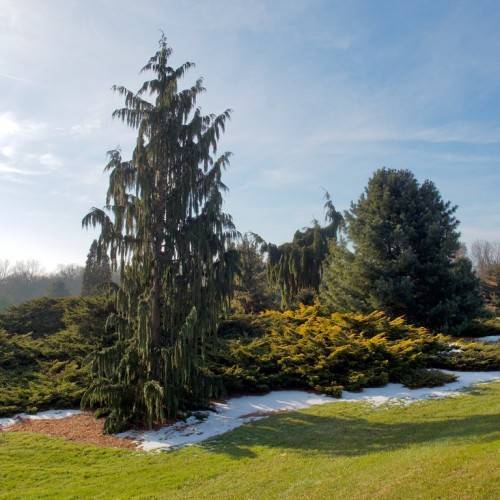
common juniper
Juniperus communis 'Effusa'
Cycle:
Perennial
Watering:
Minimum
Hardiness Zone:
2 - 7
Flowers:
Flowers
Sun:
Full sun
Soil:
Sandy Rocky
Cones:
Yes
Leaf:
Yes
Growth Rate:
Low
Maintenance:
Low
Drought Tolerant:
Yes
Salt Tolerant:
Yes
Invasive:
Yes
Care Level:
Moderate
watering
Common junipers need to be watered once every 7 to 10 days and prefer moist soil. Water deeply, saturating the soil at least 6 inches deep. Allow the soil to dry out slightly between waterings. Junipers are drought tolerant, so be careful not to overwater them.
sunlight
Common juniper (Juniperus communis 'Effusa') needs 4-6 hours of direct sunlight daily to thrive. The best time for sunlight for this plant species is between the hours of 10am to 4pm when the sun is highest in the sky. During the early morning and late afternoon, the sun is lower in the sky, which means the sunlight is less intense, making it less beneficial for the plant. Additionally, when grown in an outdoor garden, it should be located in an area where it will receive protection from harsh winds and extreme cold.
pruning
Common juniper (Juniperus communis 'Effusa') should be pruned in early to late spring, after the last frost. Pruning should be done selectively to keep a natural shape. Remove dead, diseased, and damaged branches first, as well as any shoots growing inwards towards the centre of the plant. Thinning is also important to increase air circulation and reduce the build-up of pests and diseases. Remove approximately 1/4 to 1/3 of the branches to allow enough space. Additionally, removing any competing shoots at the base of the plant will help promote healthy growth.
